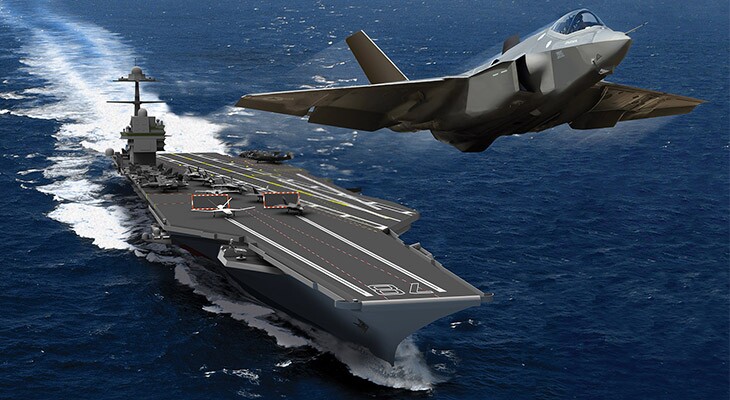The age of steam is over – at least, as far as US aircraft carriers are concerned. At Newport News, Virginia, the USS Gerald R Ford (CVN 78) successfully test fired a revolutionary Electromagnetic Aircraft Launch System (EMALS), which replaces the steam catapults that have been standard carrier equipment since the 1950s. The test made a literal splash because it involved an unmanned dead-weight sled rather than an aircraft, which landed about a hundred yards off the bow of the still under construction vessel.
The first of her class, the Ford will be the first US navy ship to carry the electromagnetic launcher. Though it will be used on all future carriers, it will not be retrofitted to existing vessels. Under development for over 25 years and manufactured by General Atomics, EMALS is the first new carrier catapult technology in 60 years to advance to practical application. Instead of using a piston forced along by a head of steam, it uses computer-controlled, solid-state electrics to propel an armature down a track.
The EMALS is designed to replace the steam-powered launch system that has been the standard on strike carriers since the 1950s. According to the Navy, EMALS is capable of being used by a wide variety of aircraft, is near-silent, and enjoys smoother acceleration and a more consistent launch speed. It also has higher launch energy, is more reliable, mechanically simpler, and is easier to maintain.

EMALS has already been tested in the first phase of ACT testing that ended in 2011 and included 134 manned launches of aircraft, including the F/A-18E Super Hornet, T-45C Goshawk, C-2A Greyhound, E-2D Advanced Hawkeye and F-35C Lightning II. The second phase saw launches of the EA-18G Growler and F/A-18C Hornet. In all, 452 manned launches were conducted.
The video below shows the June 16 launch.
Source: Huntington Ingalls











